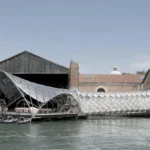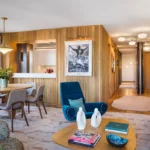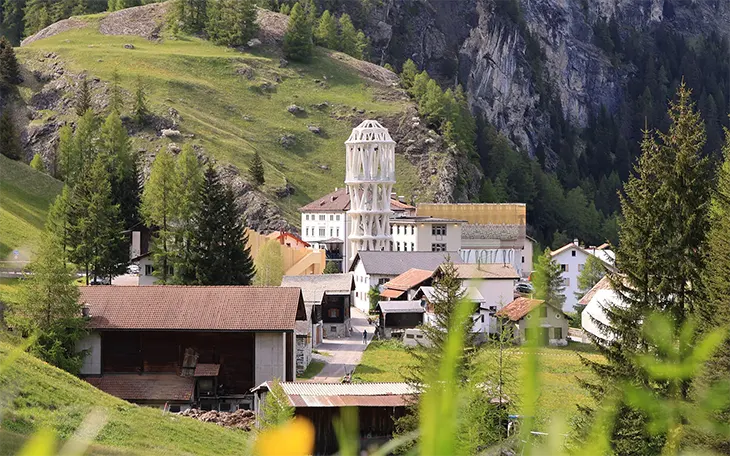
The Alpine village of Mulegns became the site of a dramatic reveal on May 20, 2025, as the White Tower, known locally as Tor Alva, was officially unveiled. Designed by architects Michael Hansmeyer and Benjamin Dillenburger in collaboration with ETH Zurich and commissioned by the Origen Cultural Foundation, the tower now stands as the world’s tallest 3D-printed building. The ceremony marked a significant moment for both the future of architecture and the cultural revitalization of this remote Swiss community.
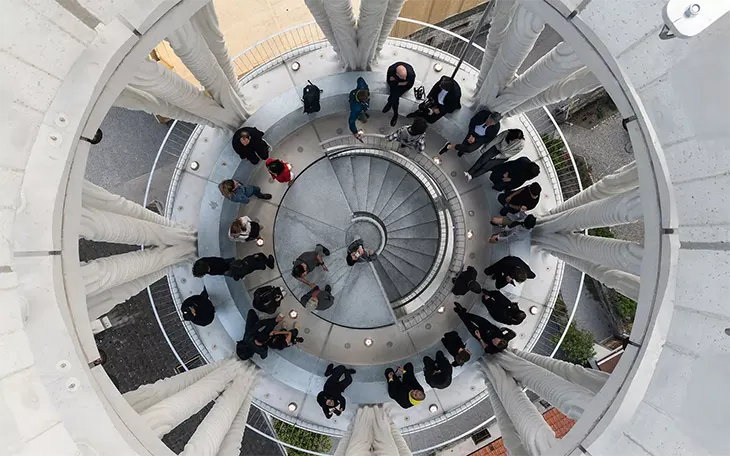
The reveal began with a theatrical gesture: a helicopter lifted the protective membrane that had veiled the tower throughout its construction, exposing the intricately patterned structure for the first time to a crowd of 300 guests. As attendees ascended the spiraling tower, they encountered its most striking feature, an elevated cupola theater surrounded by filigree branching columns. From this high vantage point, visitors were offered panoramic views of the Alpine landscape, blending the theatrical function of the space with its architectural spectacle.
The White Tower’s ambition is twofold. On one hand, it serves as an immersive venue for performance and cultural programming. On the other, it is a living research project that pushes the boundaries of computational design and digital fabrication. As a hybrid of cultural infrastructure and experimental architecture, the tower presents a tangible application of ETH Zurich’s interdisciplinary research into digital building technologies.
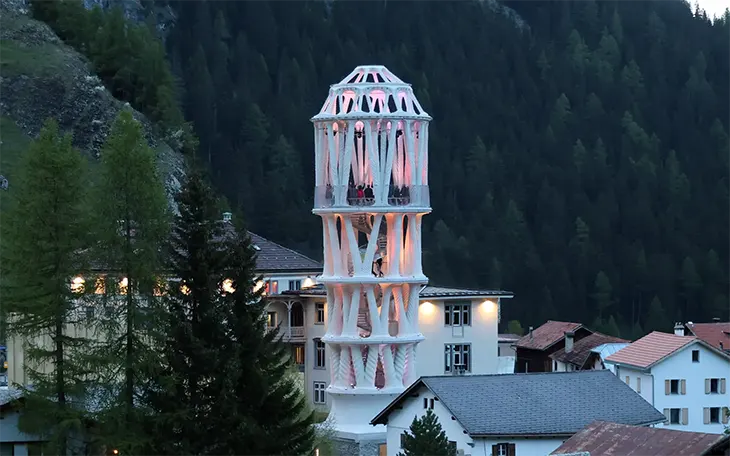
At the heart of the structure are 32 unique 3D-printed columns made from material-efficient concrete. Each column features a distinct geometry, with ornamentation that ranges from subtle motifs to bold sculptural forms. These surface details were generated computationally, demonstrating the design freedoms offered by 3D printing methods. The result is an architectural language that feels both futuristic and historical, an intentional nod to the master builders of the Baroque era in the region of Grisons.
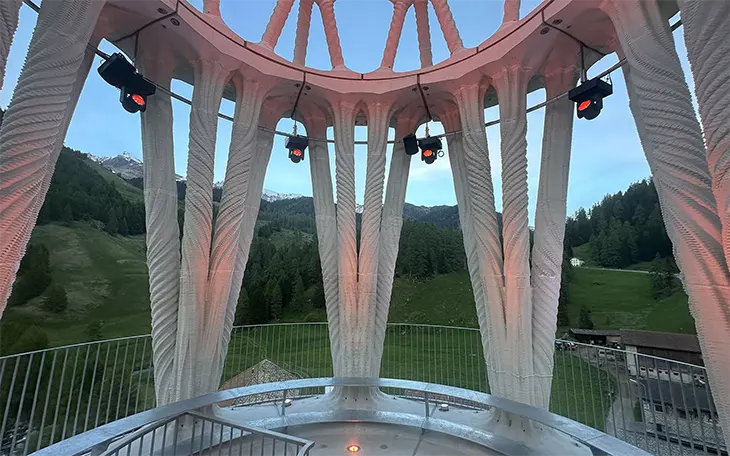
The tower’s form and fabrication method also address ecological and economic concerns within contemporary construction. By minimizing material use through optimization algorithms, the project avoids the standardization that dominates much of industrial architecture, without compromising structural integrity. The use of 3D printing reduces waste, labor, and transportation, offering a model for sustainable building in remote or resource-sensitive environments.
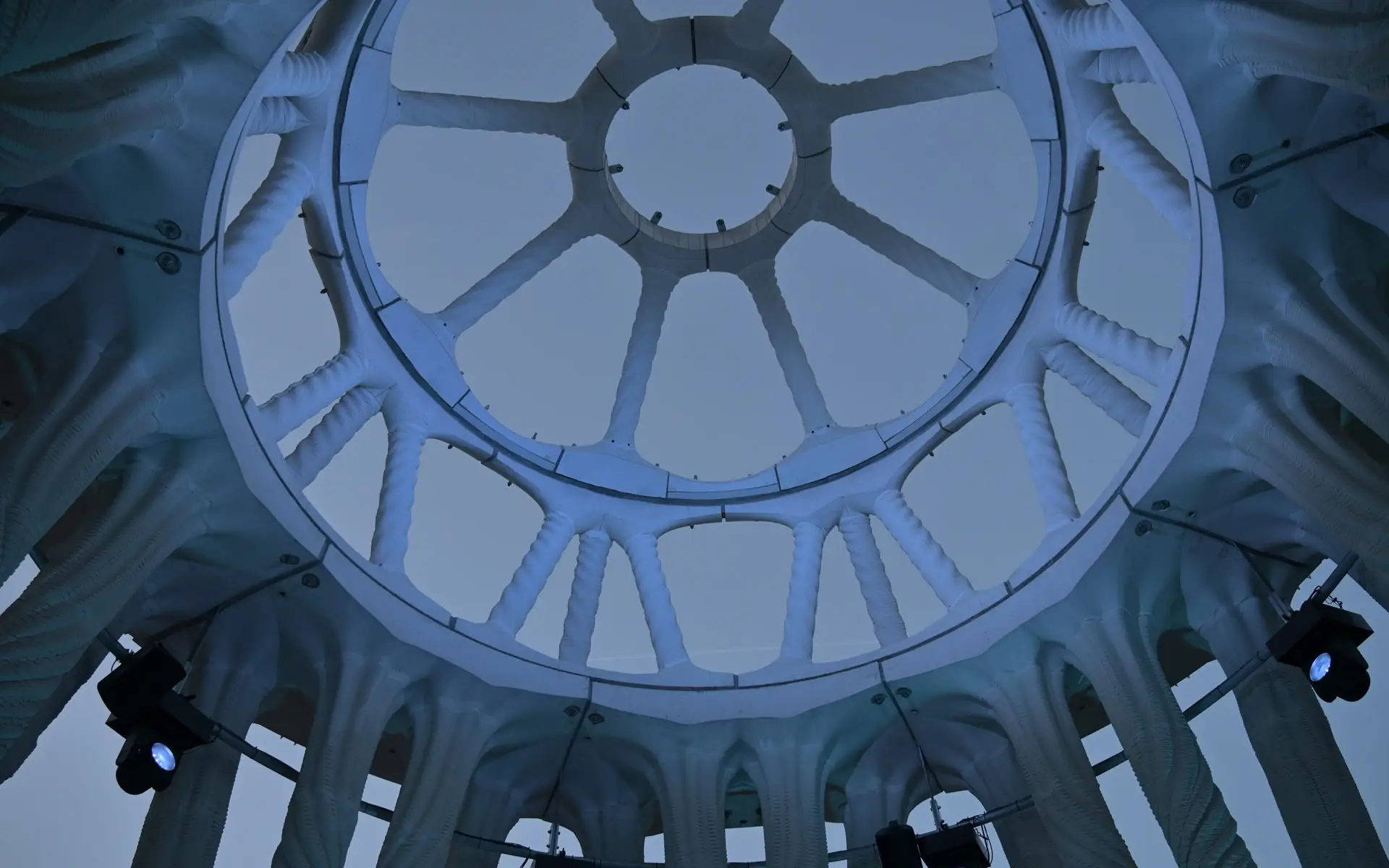
Importantly, the White Tower is also part of a larger effort to counteract rural depopulation and economic decline in Mulegns. As a permanent fixture in the village, the tower is intended to draw visitors and support cultural programming organized by the Origen Cultural Foundation. Its presence reframes Mulegns as a stage for architectural innovation and creative activity.
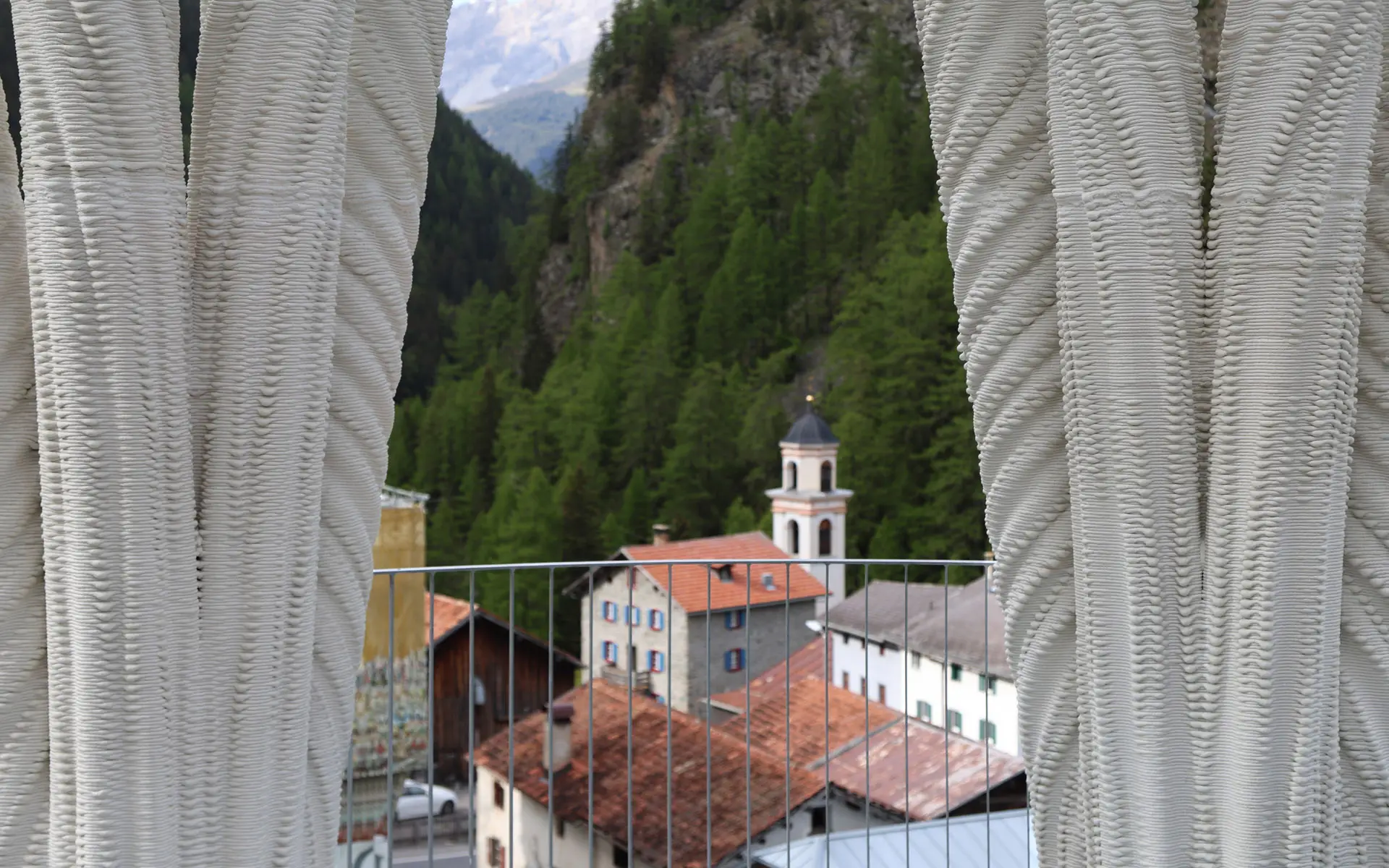
By day, the tower offers intricate spatial experiences, ornate columns, narrow passageways, and unexpected vistas. By night, it transforms. A dynamic lighting installation animates the building, turning the White Tower into a glowing vertical landmark along the old Julier Pass. This theatrical sensibility aligns with Origen’s mission to fuse architecture and performance, creating spaces that are not only seen but experienced.
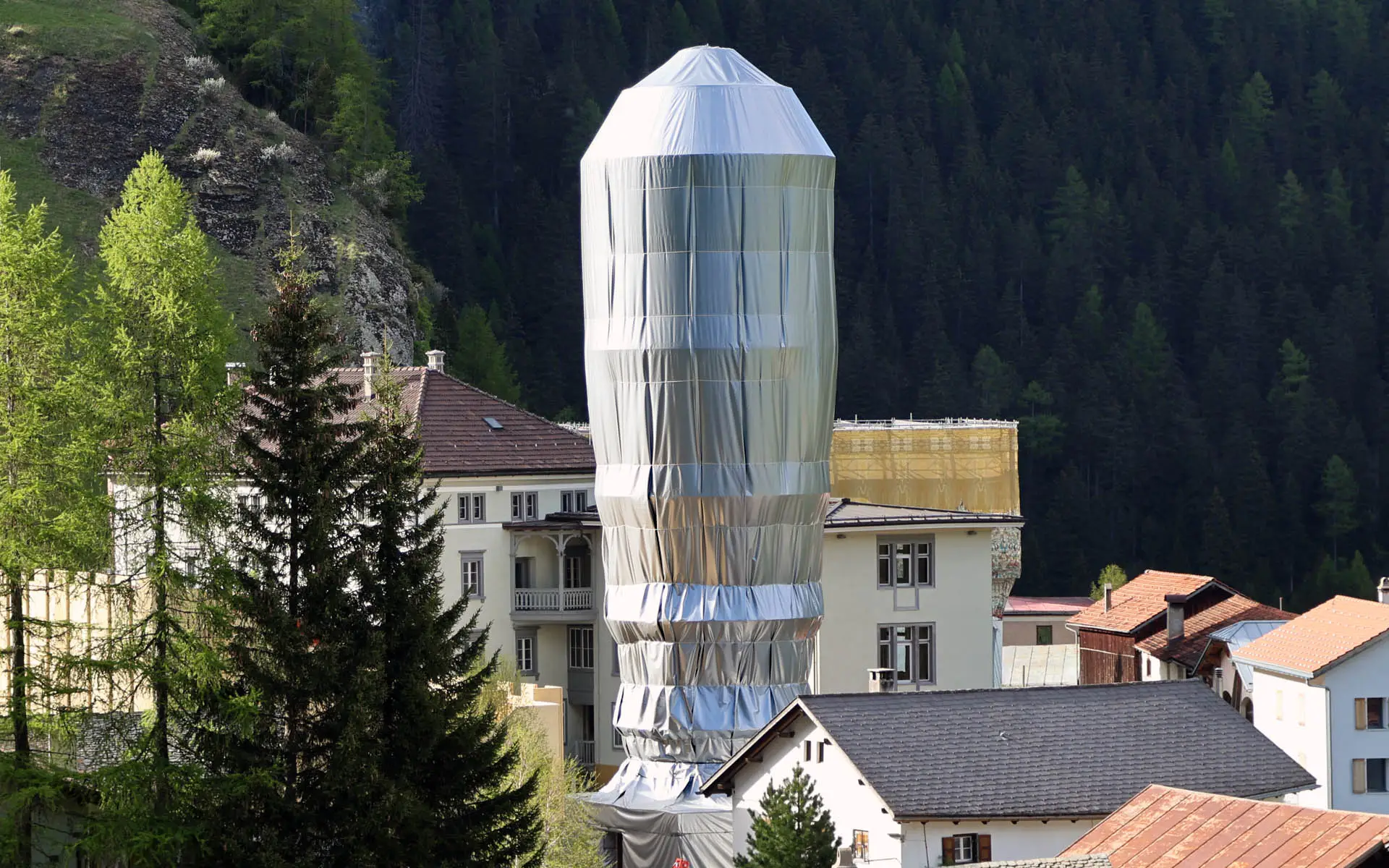
The White Tower is a rare example of a structure that integrates cutting-edge research, formal experimentation, and cultural function into a single public project. It proposes a new direction for architectural design, where form is not constrained by manual labor, and where digital tools enable a return to elaborate, expressive architecture with a high degree of specificity.


